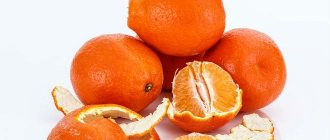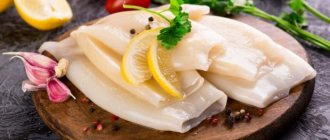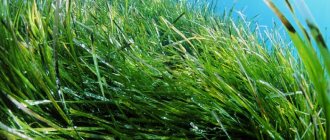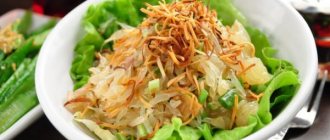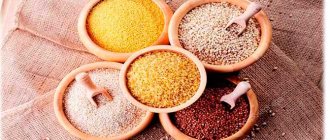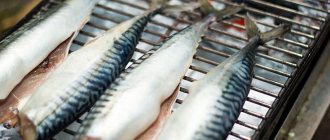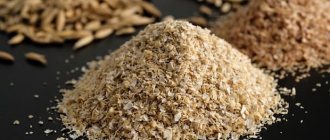Do you want to lose weight deliciously? Eat mango! It improves memory, strengthens muscles and has a fat-burning effect. Find out more about the benefits and calorie content of mangoes, get a smoothie recipe that contains only 56 kcal!
Author: Kristina Lobanovskaya, doctor, practicing nutritionist Article updated: 11/09/2020
Mango is the “king of fruits”, whose homeland is the Indian province of Assam. It is there that the mango is highly revered and even considered a food of divine origin, despite its widespread distribution. The exotic fruit of the Magnifera plant belongs to the Anacardiaceae family and has a second name - Asian apple. The fruit is actively grown for export due to the fact that it can be consumed at any stage of maturity. The calorie content of mango is 67 kcal per 100 grams. For the diet of those losing weight, the fruit is not considered the lowest in calories, and therefore is recommended for consumption in somewhat limited quantities. However, according to users, it also has a huge plus - a fat-burning effect, achieved by following a special diet.
Fresh
A fruit from India is something special. Its taste is represented by a mix of apple sourness, orange freshness and honey melon sweetness. The fruits are oval and heavy, weighing on average 300-350 grams. The color of the peel can be red-green, red, green or brownish. There are also almost black fruits. The color of the skin depends on the variety of mango, and there are about 300 of them (Indian is the most familiar to Russians, since it is sold in any supermarket). The pulp, in any case, is dense and juicy, colored bright orange or dark yellow. A distinctive feature is long fibers, which are sometimes hard. The fruit has a large stone that is difficult to separate from the pulp.
A special type is the Thai mango in the shape of an oblong oval, the skin of which is bright yellow. The pulp is juicier than Indian, so when you bite the juice literally flows down your hands. The texture is oily and, unlike its Indian counterpart, not at all fibrous. The taste of the Thai fruit is somewhat different from the Indian one, because it seems somewhat “sticky” vanilla-peach. The calorie content of the yellow product is 70 kcal per 100 g.
Mango color is due to its high carotene content. It is noteworthy that there are much more carotenoids in ripe fruit than in tangerines.
Amazing taste is not the only advantage of mango, but only one of many. The fruits contain a record amount of useful substances. In particular, the composition contains all kinds of vitamins, such as A, C, E, mineral salts of calcium, phosphorus and iron. Contains fruit and essential amino acids. Since the human body is not capable of producing these on its own, eating an Asian apple seems to be a good opportunity to replenish reserves.
Traditional medicine has appreciated the importance of mango as a food product for a long time. From the point of view of doctors, its ability to prevent cancer of various organs is seen as unique. The fruit is useful for the reproductive and genitourinary systems, especially for women. It is not without reason that this exotic product is considered a good stress reliever. According to research, it relieves mental and nervous tension, improves mood and overall well-being. Mango is extremely beneficial for the cardiovascular system, as it improves blood clotting. In general, eating an Asian apple allows you to:
- prevent constipation and stagnation of bile in the body;
- improve digestion, normalize the functioning of the intestines and stomach;
- strengthen vision;
- improve memory;
- reduce the level of nervous excitability and improve sleep;
- improve the condition of diabetes;
- cure anemia;
- increase immunity;
- strengthen muscles.
On top of that, mango has a mild laxative and diuretic effect, that is, it cleanses the body of waste and toxins. With a low calorie content - 67 kcal per 100 grams - this seems to be an excellent choice for tasty weight loss. By the way, in comparison with other fruits allowed in diets, mangoes are not endowed with a very high calorie content (for example, 100 g of apple contains 48 kilocalories). In addition, as much as 80% of the fruits of the exotic plant consist of water. The glycemic index of the fresh product is 55 units, that is, classified as average, which is another argument in favor of eating mango in a diet.
The low-calorie Asian apple contains plant fiber, which not only normalizes the functioning of the digestive tract, but also eliminates appetite for a long time. The satiety of mango is very appropriate when on a diet. It is enough to treat yourself to a piece of fruit, and in the near future those who are losing weight will be protected from the desire to snack. And since the fruits are also sweet, there is a natural rejection of harmful sweets.
The average weight of 1 piece of mango is 350 g. The calorie content of such fruit is estimated at 234 kcal. At first glance, it seems like a lot, but consuming the whole fruit will help you get rid of your appetite for at least 6 hours!
Mangoes are most often consumed fresh. This is a wonderful dessert that does not require any additions and delivers incomparable pleasure. The exotic fruit is no less beautiful when used in fruit salads and smoothies, which do not change its calorie content. However, it is worth knowing that the aromatic Asian apple helps better digestion of heavy foods, so it is recommended to be served along with meat dishes.
Important! Mango is a suitable product for losing weight because it does not contain many calories and protein. However, the absence of proteins means a lack of strength and energy, so it is better to eat fruit on a diet with milk. By combining two products, you can lose several kilograms in a few days without harm to your health.
When choosing fruit in a store, you need to follow several rules. First, you need to check the smoothness of the skin and its shine, and also evaluate its elasticity when pressed. Secondly, it is important to evaluate the smell emanating from an Asian apple: it should be strong fruity, sometimes a little pine or even turpentine. If there is no aroma, then the fruit is not fully ripe. Nothing wrong with that. You can “bring” mangoes to maturity at home by wrapping them in thick paper and leaving them in a dark place for several days. If the fruit is completely ready to eat, it should be stored in the refrigerator. Under the right conditions, it will be possible to maintain freshness for several weeks. The cut fruit should also be kept in the refrigerator, but no more than two days. In the future, the mango completely loses its taste.
Before eating, you need to remove the fruit from the refrigerator and wait until it warms up. Otherwise, you may not feel its aroma. The benefit will also be slightly reduced.
Choosing a good mango
In order for the fruit to bring maximum benefit and minimum harm, it must be of high quality in itself, ripe, not overripe, grown without chemicals.
What to pay attention to
Peel. In ripe fruit it is smooth and elastic. If you click on it, the shape will be restored. The remaining dent indicates that the fruit is overripe. The color of the peel can be different, depending on the variety - yellow-orange, yellow-green with pink shades, black spots.
Smell. A good fruit has a fruity aroma reminiscent of peach, pineapple, and pine needles. You need to sniff around the tail of the mango. If you don't feel anything, then either the fruit is unripe or you have a runny nose. And if you smell the sour smell of alcohol, then either the fruit is spoiled, or the loader spilled vodka on a box of mangoes.
It is better to buy an unripe mango than an overripe one! Because unripe fruit can always be brought to the desired state at home. Just pack it in paper. You can combine it with a banana or an apple, so the process will go faster.
Dried
Dried (dried) mango is in no way inferior to fresh mango in popularity. Dried fruits made from the pulp of an aromatic product have long been widely used in the culinary industry. They are tasty and healthy, as the residents of Thailand know for sure. The latter use dried mango everywhere, adding a delicate aroma and pleasant taste to their dishes. And, of course, such dried fruits are a nutritious and healthy snack, even despite their rather high calorie content.
The calorie content of the product is 314 kcal per 100 grams, and the calorie content of candied mango, which can also be classified as dried fruit, is 287 kcal per 100 g. Compared to a fresh product, this is a lot, so those losing weight should include dried fruits in their diet carefully.
Despite their high calorie content, candied and dried mango fruits are a complete and completely harmless snack.
Taste is not the only reason to buy a product. In fact, dried fruits contain many vitamins, including group B, the beneficial properties of which have been studied for a long time, and 12 types of amino acids. In addition, fruit slices contain fructose, phosphorus, calcium, etc. It is not surprising that eating aromatic dried fruits helps normalize the digestive tract and improve metabolism, protect against diseases of the cardiovascular system and prevent anemia. The dried product is also rich in fiber, which cleanses the body of harmful accumulations. Additionally, regular consumption of dried product allows us to talk about the following benefits:
- stabilization of the nervous system;
- normalization of sleep;
- increasing immunity;
- improvement of blood composition;
- rejuvenation of the body.
Important! Most of the calories in dried mango come from carbohydrates. However, the absence of cholesterol in it seems to be a big plus for inclusion in the diet.
Commercially, dried mango is made from ripe pulp, which is cut into thin strips and placed in a dehydrator to remove moisture. The finished product is coated with a thin layer of rice oil to preserve its beneficial qualities and attractiveness. You can prepare a healthy product yourself. First, the pulp is cut into thin slices, after which it is blanched in sugar syrup. It is noteworthy that the use of syrup significantly increases the calorie content, so for the diet it is better to use the blanching method in boiling water without adding sugar. The second stage of preparing dried fruits is drying itself. You can use an oven or electric dryer (temperature 60 degrees), and also expose the product to natural drying in the fresh air. In the latter case, the pulp can be either laid out on parchment or strung on a thread, making a kind of “garlands”.
Dried mango is consumed separately as a snack and added to various dishes: fruit salads and muesli (acts as a natural sugar substitute), baked goods. A great idea is tea with aromatic dried fruit. Since no more than two small pieces are needed for preparation, the calorie content of the drink will not be high.
Canned
Since the processed fruits of the exotic plant are no less tasty and healthy, the canned product, which is sold in light and concentrated syrup, is very popular among Russian consumers. In the first case, a minimal amount of sugar is used, which means the finished product looks healthier and healthier, especially when losing weight. Preservation in saturated sugar syrup is a fairly high-calorie and nutritious method, so it is not recommended to abuse the delicacy, especially if you have diabetes and are trying to lose weight. The average calorie content of canned mango is 73 kcal per 100 g.
Canned Asian apple is suitable for use as an independent dessert and is very good as part of a variety of salads. It often acts as a flavoring additive and decoration in the preparation of mousses, jellies and sorbets. You can also prepare alcoholic and non-alcoholic cocktails using canned treats. Cooks even use the product to enhance the taste of fish and vegetables.
In addition to its high gastronomic qualities, canned pulp is famous for its many health benefits. It is recommended to use it for anemia, diarrhea and constipation, hemorrhoids, and a desire to cleanse the liver. Substances in the canned product help prevent vitamin deficiency and increase the elasticity of blood vessels.
Rating of food delivery for weight loss
Delivery of food with calculated calorie content, ready-made diets. No more cooking and counting calories!
Go
Go
Harm of mango and contraindications
All the harm of mangoes manifests itself only from excessive intake, or from individual intolerance to the substances in its composition. If you overdo it with these exotic fruits on an unaccustomed body, you can get abdominal pain, bloating, and diarrhea.
It is not recommended to eat mango:
- Along with alcohol or during a hangover. Mango makes it difficult to remove alcohol from the body.
- Small children under 3 years old.
- For chronic pancreatitis.
- For chronic gout.
Dishes
Ripe mango is incredibly aromatic and tasty. There is only one problem - peeling the fruit is not easy. There are special devices on sale that make the process easier. If there are none, it is advisable to follow the following recommendations:
- cut the fruit on both sides, trying to cut through to the pit;
- take it in both hands and rotate the halves in a cross-shaped motion.
One half separates from the pit easily. The second remains with a bone that needs to be removed with a knife. If the mango is not ripe enough and has a dense peel, it is carefully cut off with a sharp knife. The pulp is then cut into slices, thus “exposing” the bone. The ready-to-eat pulp can be used to prepare many low to medium calorie dishes.
Juice
Mango juice is obtained by squeezing the fruit. A regular juicer is used. In cooking, the juice is used to make desserts, jelly, baked goods and fresh salads. Cocktails are often prepared based on it. The juice is also mixed with milk to create a refreshing drink. The calorie content of the shake is 35 kcal per 100 g.
Fruit juice is not only tasty, but also extremely healthy. Its chemical composition contains B vitamins, vitamins C, E and D. The mineral composition is represented by magnesium, potassium, calcium, and phosphorus. It also contains 12 amino acids. Drinking juice naturally has beneficial effects on the body:
- helps with diseases of the organs of vision;
- increases resistance to pathogens and improves immunity;
- stabilizes the functioning of the digestive tract;
- normalizes the condition with a tendency to cardiovascular diseases.
The calorie content of 100 g of mango juice is 57 kcal, so it can be consumed during weight loss.
Lassi
India is also the birthplace of this unusual drink. It consists of yogurt, water, spices and fruit. The Russians slightly modified the original recipe, replacing yogurt with pineapple and adding nuts.
To prepare lassi, you need the most ripe fruits of an exotic plant in the amount of 250 g. You also need 100 g of pineapple, 150 ml of water and 50 g of cashew nuts. The calorie content of the drink per 100 g is 93 kcal, that is, you should not abuse it on a diet.
To begin, soak the cashews in water for 20 minutes. The fruits are peeled and cut into small pieces. Place all ingredients in a blender bowl and beat until foam forms.
Smoothie
A smoothie based on mango and spinach is the right solution for those losing weight, because along with the speed of preparation and the supply of vitamins, it has a big advantage in the form of satiety. They can easily replace breakfast or drink for dinner, receiving only 51 kcal for every 100 g.
Place 150 g of spinach (you can take either fresh or frozen), half a mango, half a banana into a blender bowl. Add half a glass of natural yogurt and low-fat milk. Beat the ingredients until smooth. If the finished smoothie is too thick, you can always dilute it with water or milk.
Puree
Mango puree is a natural exotic dessert, the calorie content of 100 grams is 60 kcal. It is quite acceptable for a dietary diet, so puree can be used as an alternative to unhealthy sweets. You can prepare puree at home in several ways:
- The juicy pulp of the Asian apple is cut into small pieces and pureed in a blender bowl. The puree is simmered on the stove for several minutes. You can add sugar, but to maintain a low calorie content, it is better to avoid it. It is noteworthy that after heat treatment the puree does not change color, remaining attractively yellow.
- The mango is cut into slices without removing the skin. Bake in the oven for 20-30 minutes. Separate the baked pulp from the skin and grind in a blender. This method does not require additional heat treatment of the puree.
In cooking, mango puree can be used not only as an independent dessert, but also as a flavorful addition to dietary pancakes, casserole, and yogurt.
In addition to the unusual taste, puree demonstrates benefits for the body. With its help, it is possible to establish the digestion process, strengthen the heart and blood vessels, and prevent inflammatory processes in the oral cavity.
Salad with avocado
A light, refreshing salad with vegetables and mango - an ideal dish for a morning meal or evening snack. 100 grams contain 45 kcal, that is, the salad can be considered as low-calorie and dietary as possible.
To prepare, take 140 grams of fresh cucumber cut into rings, 50 grams of avocado chopped into small squares, 160 grams of chopped tomatoes, 100 grams of mango cut into pieces. The ingredients are mixed and sprinkled with lemon juice. When serving, sprinkle with chopped herbs and, if desired, sesame seeds. However, the last component is not included in the total calorie content, which should be taken into account when dieting.
Salad with celery
The salad using the juicy pulp of exotic fruits and the stems of the famous fat burner turns out bright and healthy. There is also no doubt about its lightness and low calorie content - only 52 kcal per 100 g.
To prepare a serving of salad, you need to tear 25 g of lettuce leaves, chop 35 g of stem celery, 40 g of bell pepper and 130 g of exotic pulp. All ingredients are laid out on a plate in a chaotic order, after which they are sprinkled with a pinch of pomegranate and sesame seeds. No dressing is required for this mix, since the juiciness comes from the mango pulp.
Since the calorie content of the dish is low, this salad can be eaten both for lunch and instead of dinner.
Salad with egg
More satisfying, but at the same time more high-calorie - salad with mango and egg. There are 111 kcal per 100 g. The salad contains a not very “healthy” ingredient - mayonnaise. If the dish is used during a period of weight loss, it is better to replace the store-bought one prepared with your own hands. There is a way to reduce calories - use lemon juice or olive oil instead of mayonnaise.
Since the salad can be stored for several days (in the absence of mayonnaise) and eaten several times a day, you can prepare several servings at once. First, 100 g of iceberg lettuce is cut into small pieces and placed on a dish, after which 80 g of the juicy pulp of the exotic fruit is chopped into cubes. Also spread in a layer on the iceberg. The next step is chopping a fresh cucumber, which is placed on top. Next comes the tomato. He is also chopped. Lubricate with a small amount of mayonnaise. Boil 2 hard-boiled eggs, grate them on a fine grater and place them on top of the mayonnaise. After even distribution, grease with mayonnaise again. Fresh tomato is used for decoration. The salad can also be sprinkled with chopped herbs.
Quick dessert
The dessert is prepared very quickly - up to 15 minutes. The only condition is the presence of a ready-made biscuit. Looks like a good alternative to unhealthy sweets. There are 125 kcal per 100 g, which makes it lower in calories compared to regular cakes and sweets. If we take into account proteins, fats, carbohydrates, then a larger percentage falls on the latter. This means that it is undesirable to overindulge in dessert in the evening, especially when trying to lose weight.
To prepare dessert you need a glass. Place a piece of biscuit on the bottom. Place some strawberries on top (five pieces are enough) and a handful of juicy mango pulp. The remaining pulp and another whole fruit are cut into small pieces. Place in a blender bowl and add a whole banana. The fruit is turned into puree, to which freshly squeezed juice of half an orange is added. The finished mass is transferred into a glass.
The nutritional value
Mango makes your diet tastier and your health stronger. The fruit contains a record high amount of vitamins and minerals, many of which are called vital for humans. In addition, the juicy pulp is a source of organic acids, mono- and disaccharides, sucrose, and oleoresin. Contains Asian apple and a substance called mangosteen, considered a natural antipyretic. And the brighter the pulp, the more keratonides it contains.
Proteins fats carbohydrates
The BJU indicators for 100 g of fresh fruit with a calorie content of 67 kcal are as follows:
- proteins – 0.5 g;
- fats – 0.3 g;
- carbohydrates – 11.5 g.
100 g of the Thai variety with a calorie content of 70 kcal has the following indicators:
- proteins – 0.6 g;
- fat – 0.3 g;
- carbohydrates – 17 g.
A similar amount of dried product with a calorie content of 314 kcal contains:
- proteins – 1.5 g;
- fat – 0.8 g;
- carbohydrates – 81.6 g.
Candied fruits from the pulp contain 287 kcal per 100 g, as well as the following BJU indicators:
- proteins – 1.1 g;
- fat – 0 g;
- carbohydrates – 64.8 g.
100 g of canned product with a calorie content of 73 kcal has the following BJU indicators:
- proteins – 0.4 g;
- fats – 0.6 g;
- carbohydrates – 18 g.
Juicy fruit juice in 100 g contains 54 kcal and:
- proteins – 0 g;
- fat – 0 g;
- carbohydrates – 13.5 g.
Bright yellow puree in 100 g contains 60 kcal and the following BJU indicators:
- proteins – 0.2 g;
- fats – 0.3 g;
- carbohydrates – 14 g.
Macro- and microelements
In Asian countries, this amazing fruit is credited with truly healing properties. The confidence of local residents is based on the rich macro- and micronutrient composition of the aromatic pulp. Among the most significant for the human body:
- Selenium – due to the effect it has on the body, selenium is called the “microelement of longevity”; increases the body's defenses; acts as a powerful antioxidant, as it neutralizes and removes foreign substances, and also prevents the development of aging processes in the body; stabilizes the functioning of the nervous system and metabolism.
- Manganese - to some extent, a microelement is involved in the work of all vital systems and organs; takes part in the metabolism of carbohydrates and fats, preventing the deposition of fat in the liver; normalizes the functioning of the reproductive system; necessary for the formation of hemoglobin.
- Copper is one of the most important trace elements for the body, participating in a number of functions: normalizing the functioning of the endocrine system, increasing immunity and neutralizing free radicals, improving digestion, and ensuring iron metabolism.
- Zinc – the importance of the substance is obvious: zinc regulates the functioning of the central nervous system, improving attention and memory; has a powerful effect on the immune system, increasing the protective activity of neutrophils; normalizes digestion processes and is endowed with antioxidant properties.
- Iron – first of all, is of great importance for the processes of hematopoiesis and intracellular metabolism; affects the metabolism of B vitamins; necessary for the full growth and development of the body; demonstrates detoxifying effect.
- Phosphorus is a macroelement indispensable for the normal functioning of the brain and cardiovascular system, as well as the proper formation of bones; promotes cell division; normalizes metabolism; regulates acid-base balance.
- Potassium is an obligatory participant in most metabolic processes; supports the functioning of the cardiovascular system and skeletal muscles; prevents problems with the nervous system and reduces the risk of developing chronic fatigue syndrome.
- Sodium is a macronutrient necessary for the proper functioning of the nervous system and strengthening the cardiovascular system; stimulates digestion by participating in the formation of gastric juice; regulates the functioning of the excretory system and maintains acid-base balance.
- Magnesium - despite its decreasing importance for the body, plays an important role in its life; has a beneficial effect on the heart and regulates the functioning of the central nervous system; improves the condition of the digestive tract and normalizes digestion processes; improves breathing functions.
- Calcium – acts as an indispensable “building” element, taking a direct part in the formation of healthy bones and teeth; maintains normal heart rhythm; prevents constipation; has anti-allergic and anti-inflammatory effects.
Vitamins
The beneficial properties of mango for the body in general and weight loss in particular are due to the concentration of vitamins in the pulp of the fruit. There are many of them, but the most important ones are:
- Choline is a B vitamin that is important for the normal functioning of the kidneys, liver and brain; regulates metabolic processes and insulin levels; prevents aging and sclerosis; improves intestinal activity; removes toxins from the body.
- PP (niacin, B3) is a water-soluble vitamin that takes part in many oxidative reactions and belongs to the B vitamins; is the only vitamin classified as a medicine by official medicine; effectively reduces blood cholesterol levels; normalizes physical condition and general well-being; is important for the skin.
- K (phylloquinone) - takes part in a number of vital processes: strengthening the skeletal system, blood clotting, building lung and heart tissue, providing cells with energy.
- E (tocopherol) – the primary function of tocopherol is to slow down the aging process; protects cellular structures from the negative effects of free radicals; controls blood pressure and helps enrich the blood with oxygen; supports psycho-emotional health and relieves fatigue.
- C (ascorbic acid) - the importance and usefulness of the vitamin for the body can hardly be overestimated: it increases immunity and maintains protective mechanisms at the required level, regulates hematopoiesis, removes toxins and regulates metabolism.
- B9 (folic acid) – important for the development and functioning of the circulatory and immune systems; participates in protein biosynthesis and redox processes; normalizes the functioning of the gastrointestinal tract; helps in maintaining a normal psycho-emotional state.
- B6 (pyridoxine) – necessary for metabolism and is directly involved in the production of hemoglobin; reduces lipid and cholesterol levels; regulates blood pressure and reduces the likelihood of stroke; Helps the uptake of glucose by nerve cells.
- B5 (pantothenic acid) – is important for the metabolism of proteins, fats, carbohydrates and amino acids, helps cells produce energy; helps in prolonging youth and life; regulates the functioning of the gastrointestinal tract and the functioning of the nervous system; promotes better absorption of other vitamins by the body.
- B2 (riboflavin) - considered one of the most important water-soluble vitamins and a coenzyme for a number of biochemical processes; has a positive effect on the mucous membranes of the digestive tract; improves visual acuity and reduces eye fatigue.
- B1 (thiamine) – improves blood circulation; takes part in various metabolic processes, including protein and water-salt; increases tone and reduces mental stress; Helps in the normal functioning of the cardiovascular system.
- A (retinol) is an antioxidant that plays an important role in maintaining vision, healthy skin and hair; strengthens the immune system and increases the barrier function of mucous membranes; participates in the synthesis of steroid hormones, is an antagonist of the thyroid hormone thyroxine.
The rich composition puts mango among extremely useful products that strengthen the body, slow down aging and demonstrate a calming effect. Thanks to its unique taste, it can easily be used as an appetizing and low-calorie snack, as well as as a component of dietary dishes. But regular consumption of exotic fruit should be done with caution, otherwise, along with the benefits, it can also cause harm to the body: you may encounter bowel problems and problems with the functioning of the respiratory tract (occurs as a result of irritation of the mucous membrane). One should not lose sight of one more important detail - mango skin, unlike pulp, is highly allergenic. If you are prone to allergic reactions, it is better to use gloves when cleaning fruits.
Composition of BJU
In mango, the ratio of components is optimal for losing weight and maintaining the overall health of the whole body. The fruit contains a minimal amount of proteins, fats, the basis is carbohydrates.
Ratio of proteins, fats and carbohydrates:
- 0.51 g of protein compounds (about 2 kcal);
- 0.27 g fat (about 2 kcal);
- 15.2 g carbohydrates (about 61 kcal)
By calculating the calorie content of foods, you can draw up a rough plan for eliminating extra pounds. By eating fruit every day, weight loss will be stable and gradual. Such a diet will not cause stress in the body and will not cause negative reactions.
